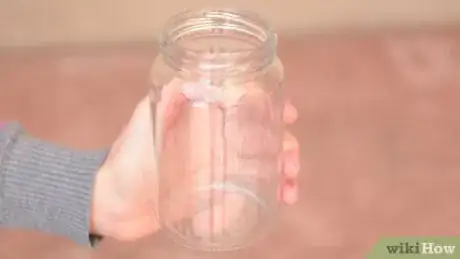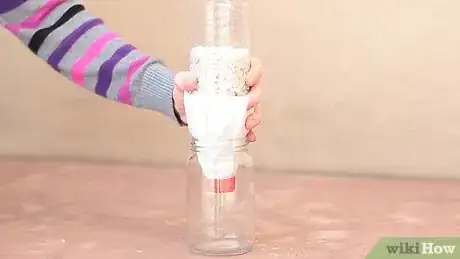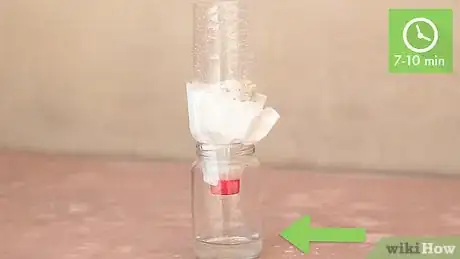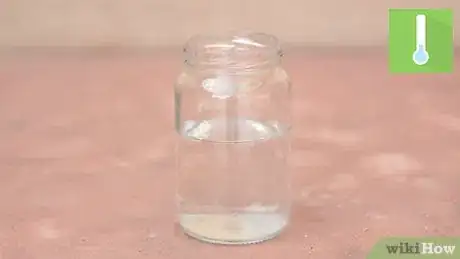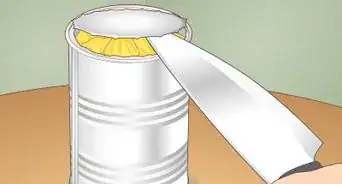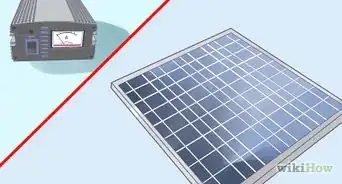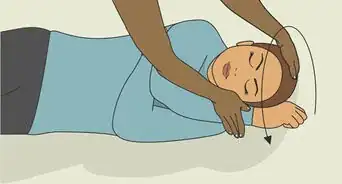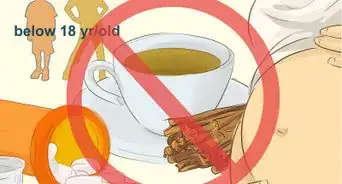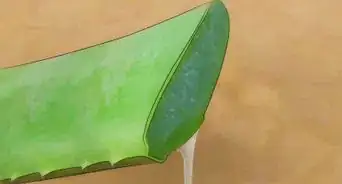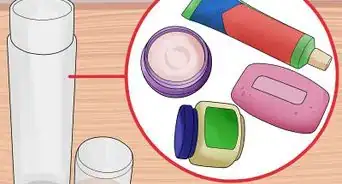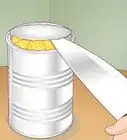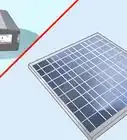wikiHow is a “wiki,” similar to Wikipedia, which means that many of our articles are co-written by multiple authors. To create this article, 117 people, some anonymous, worked to edit and improve it over time.
wikiHow marks an article as reader-approved once it receives enough positive feedback. This article has 49 testimonials from our readers, earning it our reader-approved status.
This article has been viewed 1,102,712 times.
Learn more...
Water is essential to life. This technique is very useful when you are hunting to survive. People can live up to a week without food, but only two to three days without water. Clean water can be hard to find if you get stranded in the wild or if there is an emergency. If you have to find your own water supply, you must be able to strain out impurities that can make you sick. This article will tell you how to make a water filter.
Steps
Making a Water Filter
-
1Gather your supplies. You will be making a water filter that relies on layers to make dirty water clean. If you plan on drinking this water, you will need to boil it after you have filtered it. Here is a list of what you will need:
- Plastic bottle with a cap
- Craft knife
- Hammer and nail
- Coffee filter
- Large cup or mug (Either one works)
- Activated charcoal
- Sand
- Gravel
- Container to catch the water (jar, cup, mug, etc)
-
2Use a craft knife to cut the bottom inch (2.54 centimeters) or so off of the plastic bottle. Stick the knife into the side of the bottle, and start cutting it slowly. You may find that making short, back-and-forth cuts (like sawing) may be easier.
- If you are a child, ask an adult to help you with this step
- Add handle so that you can hang it while it filters the water. Start by poking two holes near the cut edge of the bottle. Make the holes opposite of each other. Thread a piece of string through the two holes. Tie the string in a knot.
Advertisement -
3Use a hammer and nail to punch a hole in the cap. The hole will help slow down the flow of water and make the filter more effective. If you don't have a hammer or nail, use a craft knife to stab an X shape into the bottle cap.
-
4Put the coffee filter over the mouth of the bottle and tighten the cap over it. The coffee filter will keep the activated charcoal inside the bottle and keep it from falling out. The cap will hold the coffee filter in place.
-
5Put the bottle cap-side-down into a mug or cup. This will help keep the bottle steady while you fill it. If you don't have a cup or mug, then you can place the bottle down on a table. You will need to hold it steady with one hand.
-
6Fill the bottom third of the bottle with activated charcoal. If the charcoal comes in large pieces, you will need to break them down into smaller pieces. Do this by putting the chunks inside a bag, and crushing them with a hard object (such as a hammer). You don't want the chunks to be larger than a pea.
- Charcoal can get very dirty. You can keep your hands clean by wearing some gloves.
-
7Fill the middle of bottle with sand. You can use any type of sand you want, but avoid using colored craft sand. Colored sand may leak dyes into the water. Try to make the sand layer about as thick as the charcoal layer. The bottle should be a little more than half-way full by now.
- Try using two types of sand: a fine grained sand and a coarse grained sand. The finer sand will go first, on top of the charcoal. The coarse grained sand will go next, on top of the fine-grained sand. This will create more layers for the water to pass through, and help make it cleaner.
-
8Fill the rest of the bottle with a gravel. Leave an inch (2.54 centimeters) or so of empty space between the gravel and the cut part of the bottle. Do not fill the bottle all the way with gravel, or the water may spill over if it does not drain fast enough.
- Try using two types of gravel: a fine grained gravel and a chunky gravel. The fine grained gravel will go first, on top of the sand. The chunky gravel will go next, on top of the fine gravel.
Using Your Water Filter
-
1Choose a jar to catch the filtered water. Make sure that the jar is clean and large enough to hold the water you plan on filtering. If you don't have a jar, try using a bowl, cup, pot, or a mug.
-
2Hold the filter over the container. The cap should be pointing towards the bottom of the container. If your jar has a large opening, try setting the water filter down on top of it. This way, you won't need to hold the filter. If you made a handle for your filter, hang the filter up now. Place the jar right under it.
-
3Pour water into the filter. Make sure that you pour slowly. This way, the water will not overflow. If the water starts to reach the top of the filter, stop and wait for the water level to go down. Once you can see the gravel again, pour some more water.
-
4Wait for the water to flow into the jar. This will take about seven to ten minutes. As the water passes through the different layers, it will become cleaner.
-
5Pour the water back through the filter if it is not clear. Once the water stops dripping, take the jar out from under the filter. Slide a new jar under the filter, then pour the filtered water back over the gravel. You may need to repeat the filtering process two or three times before the water runs clear.
-
6Boil the water for at least one minute to make it safe to drink. The water will also still contain dangerous bacteria, chemicals, and microorganisms. You can get rid of all these by boiling the water for at least one minute.[1]
- If you are higher than 5,000 feet (1,000 meters) above sea-level, you will need to boil the water for at least three minutes.[2]
-
7Let the water cool before storing it in a clean, air-tight container. Do not leave the water standing for long, or new bacteria may form inside it.
Making Other Types of Filters
-
1Make cloudy water clear again by pouring it through a coffee filter. Get a round, cup-shaped coffee filter and turn it upside down so that it fits over a cup like a lid. Wrap a rubber band around the coffee filter to keep it in place. Slowly pour the cloudy water over the coffee filter. Boil the water afterwards to make it drinkable.
- If you don't have a coffee filter, use a paper towel or a piece of cotton fabric instead. Make sure that the square is big enough to fit over the mouth of the cup. Try to use white fabric or a blank paper towel. Colored fabrics and paper towels contain dyes, which may bleed into the water.
-
2Make a water filter using a fruit peel. Fruit peels have the ability to absorb bacteria. Peel a banana, and grind the peel in a blender. You may discard the banana or eat it; you won't need it for the filter. Once the peel is blended, put it into a coffee filter. Hold the filter over a cup. Pour water through the coffee filter. The banana peels will help absorb bacteria, and the coffee filter will help make the water clear again.[3]
-
3Make a plant xylem filter using a water bottle and a pine branch. Sapwood, such as pine, contains xylem, which can absorb and filter out dirt and bacteria. It can remove up to 99.9% of bacteria from water, but will not remove viruses such as hepatitis and rotavirus.[4] [5] You will need to boil the water after filtering it to make it safe to drink. Here's how to make a xylem filter:[6]
- Cut a 4 inch (10.16 centimeters) long piece from a pine tree branch.
- Peel off the bark, and make sure that it can fit into the neck of the bottle. If it is too wide, shave it down using sandpaper or a pocket knife.
- Slide the first inch (2.54 centimeters) or so of the stick into the neck of the bottle.
- Cut the bottom of the bottle off and turn the bottle upside down.
- Fill the bottle with water, and let the water drain through the stick.
- Do not let the stick dry out. If it dries out, it won't be as effective.[7]
Community Q&A
-
QuestionHow does the gravel, sand, and charcoal filter work?
 Community AnswerEach time the water passes through a different layer, it becomes cleaner. First, the gravel layer catches large pieces of debris, such as twigs, leaves, and bugs. Next, the sand layer catches smaller particles, such as dirt and grit, and makes the water look clean. Finally, the charcoal layer gets rid of bacteria and some chemicals.
Community AnswerEach time the water passes through a different layer, it becomes cleaner. First, the gravel layer catches large pieces of debris, such as twigs, leaves, and bugs. Next, the sand layer catches smaller particles, such as dirt and grit, and makes the water look clean. Finally, the charcoal layer gets rid of bacteria and some chemicals. -
QuestionWhat makes activated charcoal so special?
 Community AnswerActivated charcoal is made a little differently from regular charcoal. It has oxygen added back to it. This makes it more porous thus better at filtering impurities. It is commonly used in water filters and aquarium filters.
Community AnswerActivated charcoal is made a little differently from regular charcoal. It has oxygen added back to it. This makes it more porous thus better at filtering impurities. It is commonly used in water filters and aquarium filters. -
QuestionWhy do I have to boil the water before I drink it? Isn't filtering enough?
 Community AnswerUnfortunately, filtering is not enough. Some types of microbes, bacteria, and viruses are too small to be filtered out. They can only be killed by very high temperatures.
Community AnswerUnfortunately, filtering is not enough. Some types of microbes, bacteria, and viruses are too small to be filtered out. They can only be killed by very high temperatures.
Warnings
- Filtering water does not make it safe to drink. Always purify the water before using it for drinking, cleaning, and preparing food.⧼thumbs_response⧽
- Always boil your filtered water before using it for brushing teeth, cooking, drinking, making drinks (ie: coffee or tea), and washing dishes.[9]⧼thumbs_response⧽
References
- ↑ United State Environmental Protection Agency, Emergency Disinfection of Drinking Water
- ↑ United State Environmental Protection Agency, Emergency Disinfection of Drinking Water
- ↑ Survivopedia, The Bizarre Use of Banana Peels for Your Survival Water
- ↑ Massachusetts Institute of Technology, Water Filtration Using Plant Xylem
- ↑ Technology Review, How to Build a Plant Xylem Water Filter
- ↑ Common Sense Homesteading, 3 Emergency Water Filtration Options to Get the Funky Chunks Out
- ↑ Massachusetts Institute of Technology, Water Filtration Using Plant Xylem
- ↑ United State Environmental Protection Agency, Emergency Disinfection of Drinking Water
- ↑ United State Environmental Protection Agency, Emergency Disinfection of Drinking Water
- Videos provided by Ultimate Survival Tips
About This Article
To make your own water filter, use a craft knife to cut the bottom inch off of a plastic bottle, then punch a hole in the bottle cap with a hammer and a nail. Place a coffee filter over the mouth of the bottle and tighten the cap over it, then put the bottle upside-down into a mug or cup. Fill the bottom third of the bottle with activated charcoal, the middle third with sand, and the top third with gravel. To use the filter, pour water into the bottle and let it drip through the hole in the cap. Read on to learn how to make a filter out of a coffee filter and a banana peel!

